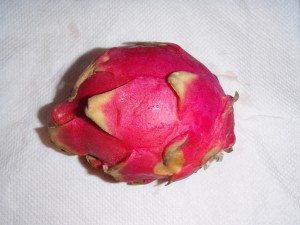Back in April Tony, knowing how much I don’t like shoes, sent me a link to an article titled “You Walk Wrong” that discussed the problems with shoes and footwear that feels close to barefoot.
Before that my favourite footwear was my Teva sandals, but they had some limitations: most importantly, I could not wear them to work as the dress code is a bit more formal than my usual “shorts ‘n’ sandals”. They also had the problems mentioned in the article.
I was keen to try two of the barefoot-style shoes mentioned: the Vibram Five Fingers and the Vivo Barefoot; so I did.
The Five Fingers were interesting. Some friends had already tried and spoke highly of them. Having now tried them quite a lot myself, I have mixed feelings. When I first put them on I thought they were great, although my toes felt slightly odd being each enclosed in their own little toe-sock. But on that first hot summer day that was fine. Unfortunately by the end of that day I had developed blisters on both feet. I was certain this was caused by a defect in the shoe since I could have managed the same travel completely barefoot without any problems. Schwern said the same thing happened to him: it was caused by lumps in the seam between the sole and the upper; and he fixed it by adding some moleskin. Simple solution, but why should I have to fix my new shoes?! Vibram, please keep the seam smooth, or move it to the side of the shoe where it can’t cause these sort of blisters.
A few months later I discovered another problem with the Five Fingers: they don’t dry well. They are good when permanently wet and great in the sun, but if you get them wet just once in the morning of a non-sunny day, they’ll still be wet the next morning. Compared to my Tevas this was a downgrade. The Tevas, not having any upper, would dry out in a few hours of use, and allow my feet to dry too. The Five Fingers stayed wet and kept my feet wet. Then both feet and shoes started to stink. At least the five fingers were easy to wash.
The Five Fingers are also not acceptable office wear (except at weekends), but they are a conversation starter. I think they’re great for outside the city, but not for urban use.
The Vivo Barefoot, however, are the greatest urban footwear I’ve ever seen. Quoting the article: The Vivos are a totally different experience, since they’re as close to going barefoot in the city as you can get
. I bought the “Dharma” version. The sole is thin enough for me to feel the texture of the ground, but tough enough to protect my feet. Although enclosed, my feet feel free. The Vivo Barefeet do take a while to dry out if they get wet, but they don’t get as wet as easily as the Five Fingers. But for me the best feature is that nobody in the office notices that they aren’t normal shoes!

